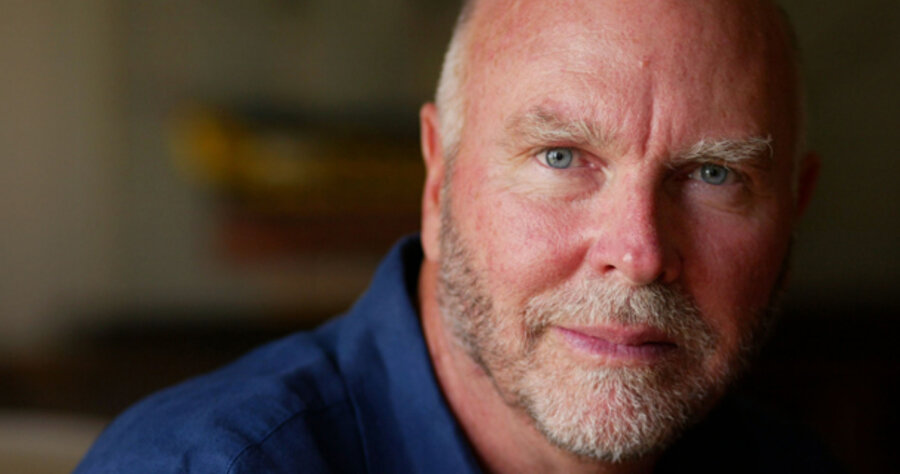A new step toward synthetic life
Loading...
Scientists have long considered DNA the instruction manual for biological life. Each species has its own unique set of instructions, or genes. And for just as long, scientists have wondered if by swapping these instruction manuals, they could transform one organism into another.
Now, in a key experiment for the nascent field of designing life from scratch, scientists at the J. Craig Venter Institute in Rockville, Md., have done just that. They have successfully transplanted the entire genome of one bacterium species into another, changing the recipient into an organism that looks, feels, and for all intents and purposes is, the donor.
"This is equivalent to changing a Macintosh computer to a PC by inserting a new piece of software," says J. Craig Venter in a teleconference. "Synthetic biology still remains to be proven, but now we are much closer to knowing it's absolutely theoretically possible."
The young field of synthetic biology rests on the premise that scientists can design life from the ground up, that they can choose the traits that determine what the organism eats, where it thrives, and how fast it reproduces.
Organisms engineered entirely by human hand could have wide-ranging applications. They might be engineered to create cheap biofuels from a great variety of crops and biomass, including woody material that today is too expensive to convert profitably. They might clean up chemical spills, oil spills, and other man-made environmental disasters.
But the question has always lingered: Does DNA alone define an organism or do other elements factor in? The study, published Thursday in the online version of the journal Science, appears to answer that question, at least for simple bacteria known as mycoplasma.
"Just the chromosome itself, without any accessory proteins, is all that is necessary to boot up this cell system," says Dr. Venter. "That's a very important finding for the future of this field.... It really simplifies the task."
Any tinkering with nature raises ethical questions, not to mention concerns over safety. But in this case scientists didn't create a truly new organism, Venter argues. The genome already existed and the resulting organism is identical to those found in nature. What's new is the process. And as scientists take the next logical step and move toward designing organisms completely from scratch, these questions of safety and ethics will move to the fore.
For decades, scientists have known that bacteria, which, unlike plants and animals, lack a defined nucleus, can freely swap genes. And Dolly, the sheep cloned in 1996, showed that a nucleus taken from one cell and implanted into another denucleated cell, could grow into a viable animal. But never before have scientists taken a species' naked DNA, without accessory proteins, and successfully put it into a different species, transforming it in the process.
"People would have predicted this would be possible based on what we know," says Philip Green, a professor of genome sciences at the University of Washington in Seattle, when informed of the project. "But you never know until you do it that it's going to work."
Led by microbiologist John Glass, the researchers took DNA from mycoplasma mycoides, a small bacterium found in goat intestines, and introduced it into the body of a close relative, mycoplasma capricolum. About one in 150,000 took. Mycoplasmas have a small number of genes – around 500 – and no cell walls, which makes introducing DNA easier. The bacterium's simplicity also makes it a good place to begin determining the minimum instruction set, or genes, needed to create life, an important step in future attempts at designing life from the ground up.
While other researchers hail the technical achievement, they question the benefits of a build-from-scratch approach. When looking to design a useful organism, cost is the No. 1 concern, says George Church, professor of genetics at Harvard Medical School. And starting from zero is the costliest approach.
"It's sort of like saying, 'If we could pull Manhattan to the ground and build a whole new set of skyscrapers, it would be better.' And maybe it would be. But it's expensive," he says. "I can think of lots of ways of improving Manhattan, but they don't include changing 100 percent; they include changing 1 percent."
When trying to create organisms that can more efficiently produce biofuels — turning woody matter into alcohol or gasoline-like compounds — nature already offers plenty of starting points, says Church — like the common E. coli.
"They need to show that this is cheaper or faster or something. And this paper doesn't do that," he says.
The study is an important academic achievement, but it's not critical to moving from fossil fuels to renewable biofuels, says Stephen del Cardayre, vice president of research and development at LS9 Inc., a San Carlos, Calif., company developing organisms to make biofuels. "There is much lower-hanging fruit."
Biofuels face several hurdles. The most obvious: They must be price-competitive with petroleum products. To meet that challenge, researchers are looking at microorganisms that could turn biomass into fuel more efficiently than today's processes.
With a few modifications, existing organisms can be designed to achieve these goals, says Dr. del Cardayre, adding that LS9 is about a year away from releasing its own "renewable petroleum" from a modified organism. "I don't need a synthetic organism to do that," he says.





